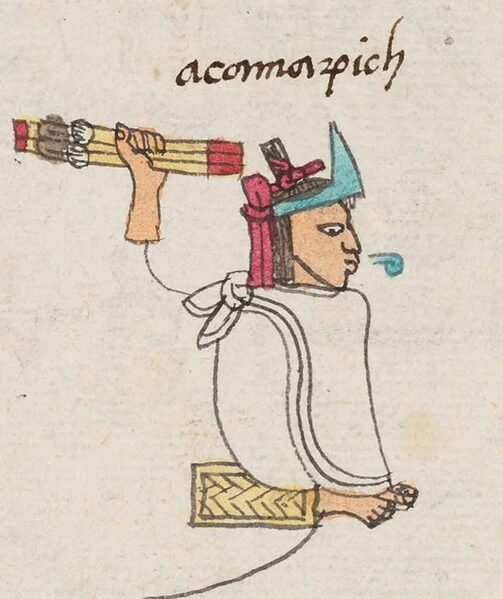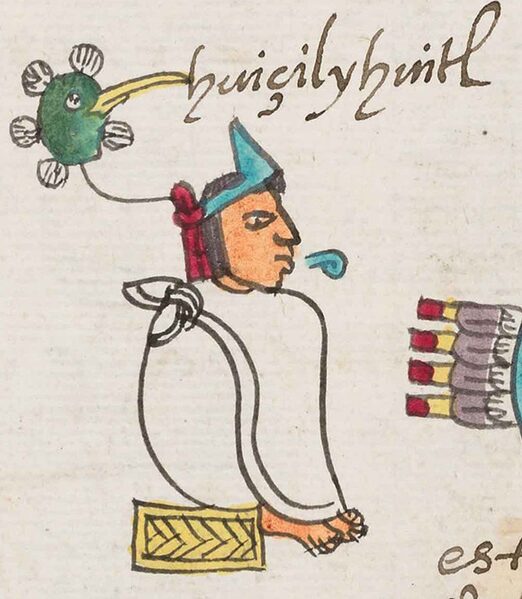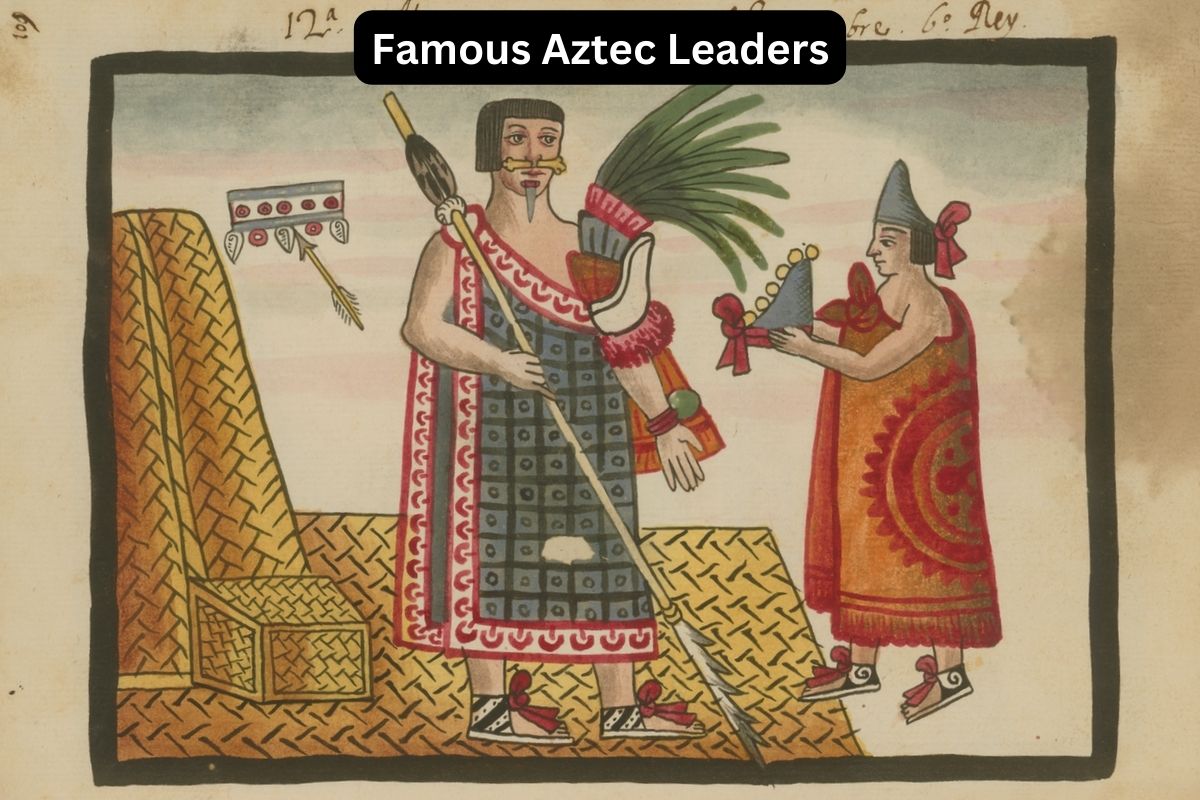The Aztec Empire, known for its complex social structure, impressive architectural achievements, and profound religious practices, was one of the most formidable and sophisticated civilizations in pre-Columbian Mesoamerica.
At the heart of this empire were its leaders, the tlatoque (plural of tlatoani), who not only governed but also shaped the destiny of their people. These rulers were not just political figures; they were considered divine representatives, central to the Aztec’s cosmological beliefs and cultural identity.
In this article, we explore the lives and legacies of some of the most famous Aztec leaders. From the foundation of Tenochtitlan to the tragic fall of the empire, these leaders navigated through periods of strife and prosperity, leaving an indelible mark on history.
Their achievements in warfare, diplomacy, architecture, and religious reform played pivotal roles in the rise and expansion of the Aztec Empire, making their stories essential for understanding one of history’s most intriguing civilizations.
Aztec Leaders in Order
1. Acamapichtli (1376–1395)

Acamapichtli was the first tlatoani, or ruler, of Tenochtitlan and is often credited with being the founder of the Aztec imperial dynasty. His reign marked the beginning of the Aztec’s rise to power in the Valley of Mexico.
Also Read: Aztec Temples
Acamapichtli focused on consolidating power, establishing social and political structures, and forging alliances with nearby city-states. His leadership laid the groundwork for the future expansion and success of the Aztec Empire.
2. Huitzilihuitl (1395–1417)

The second tlatoani of Tenochtitlan, Huitzilihuitl was the son of Acamapichtli. He is known for his diplomatic skills, particularly his strategic marital alliances that helped strengthen the Aztec’s position in the region.
Also Read: Facts About Quetzalcoatl
One of his most notable achievements was marrying the daughter of the ruler of Texcoco, another powerful city-state, which helped form a strong alliance that was pivotal in the Aztecs’ later conquests and dominance.
3. Chimalpopoca (1417–1427)

Chimalpopoca was the third tlatoani of Tenochtitlan and also a son of Huitzilihuitl. His reign was characterized by maintaining and expanding the alliances and tributary states established by his predecessors.
During his rule, the Aztecs continued to grow in power and influence, although his reign faced challenges due to the increasing influence of the Tepanec people and their ruler, Tezozomoc, over the Valley of Mexico.
Chimalpopoca’s reign ended under mysterious circumstances, with some accounts suggesting he was assassinated or forced to commit suicide due to Tepanec pressure.
4. Itzcoatl (1427–1440)

Itzcoatl, the fourth tlatoani of Tenochtitlan, was a pivotal figure in the history of the Aztec Empire. His reign marked a significant turning point as he initiated major reforms and expansionist policies.
He overthrew the Tepanecs, freeing the Aztecs from their dominance, and then established the Triple Alliance with the city-states of Texcoco and Tlacopan. This alliance laid the foundation for what would become the Aztec Empire.
Itzcoatl also promoted a new origin story for the Aztecs, elevating their status and legitimizing their rule. Under his leadership, the Aztecs started their transformation into a major regional power.
5. Moctezuma I (1440–1469)

Also known as Motecuhzoma Ilhuicamina, Moctezuma I was the fifth tlatoani and under his leadership, the Aztec Empire reached new heights of power, influence, and territorial expansion. He is known for his military conquests and the expansion of the empire through warfare.
Moctezuma I also initiated major public works in Tenochtitlan and undertook significant religious reforms, including the expansion of the Templo Mayor, one of the most important religious structures in the Aztec capital. His reign is often seen as the beginning of the golden age of the Aztecs.
6. Axayacatl (1469–1481)

Axayacatl, the sixth tlatoani, was known for his military prowess and continued the expansionist policies of his predecessors.
His reign was marked by several significant military campaigns, including the notable conquest of the city-state of Tlatelolco, which was integrated into Tenochtitlan.
Axayacatl’s campaigns expanded Aztec territory significantly, although he also faced setbacks, such as the defeat against the Tarascans (Purépecha). His reign continued to consolidate the power and influence of the Aztec Empire in Mesoamerica.
7. Tizoc (1481–1486)

Tizoc, the seventh tlatoani of Tenochtitlan, had a relatively short and less illustrious reign compared to some of his predecessors. He is often remembered for his less successful military campaigns and difficulties in expanding the empire.
Despite these challenges, Tizoc continued the expansionist policies and maintained the power structure established by his predecessors. He also contributed to the construction of significant a
8. Ahuitzotl (1486–1502)

Ahuitzotl, the eighth tlatoani, was one of the greatest military leaders of the Aztec Empire. His reign was marked by significant territorial expansion, extending the empire’s reach to its greatest extent.
Ahuitzotl was known for his ambitious building projects, including the expansion of the Templo Mayor and the construction of a new aqueduct for Tenochtitlan. His reign saw increased prosperity but also brutal warfare and the enforcement of tribute from conquered regions.
9. Moctezuma II (1502–1520)

Moctezuma II, also known as Montezuma or Motecuhzoma Xocoyotzin, is the most famous Aztec emperor, primarily due to his encounter with Spanish conquistador Hernán Cortés.
During his reign, the Aztec Empire reached its peak in terms of wealth, power, and size. However, his reign also saw the beginning of the end for the Aztec Empire.
Moctezuma II’s response to the arrival of the Spanish, including his initial belief that Cortés might be the god Quetzalcoatl, led to a series of events that culminated in the Spanish conquest of Mexico.
10. Cuauhtémoc (1520–1521)

Cuauhtémoc was the last Aztec emperor and is celebrated for his valiant efforts to resist the Spanish conquest. He took power during the siege of Tenochtitlan and led the defense of the city against the Spanish forces and their indigenous allies.
Despite his bravery and leadership, Tenochtitlan fell to the Spanish in 1521. Cuauhtémoc was captured, and later, while accompanying Cortés on a campaign, he was executed under controversial circumstances. His death marked the end of the Aztec Empire.
